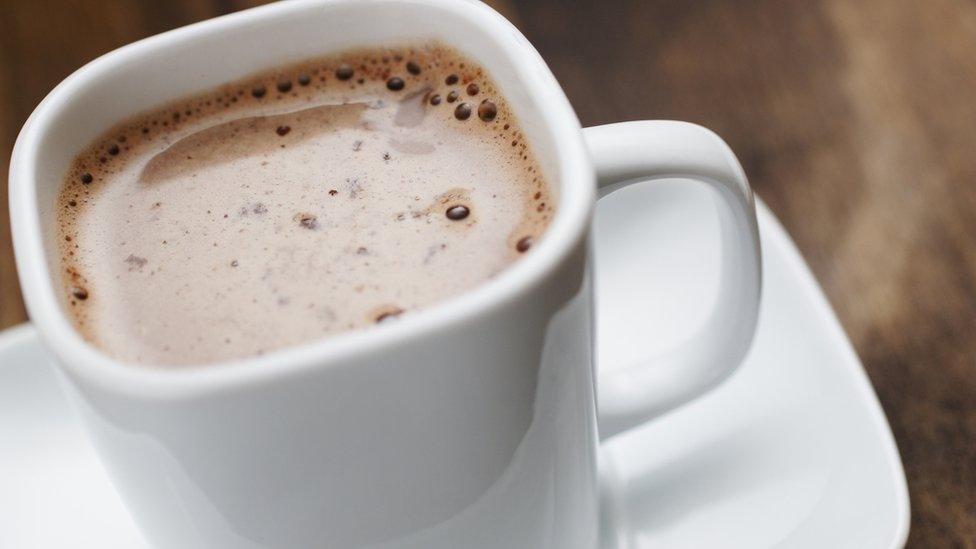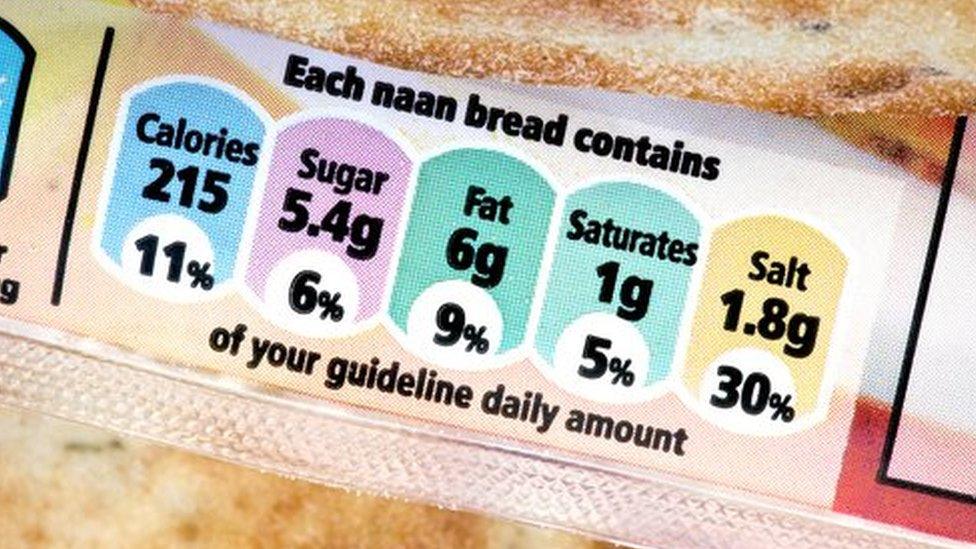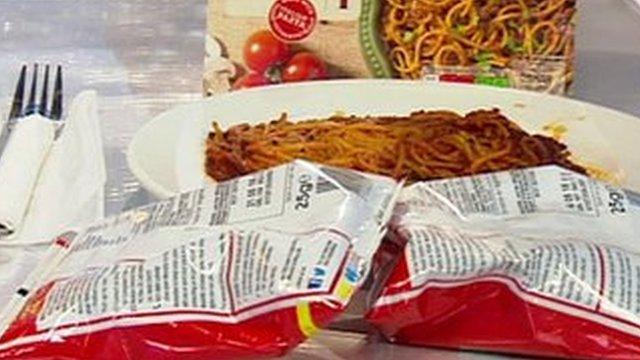Hot chocolate serving 'has more salt than packet of crisps'
- Published

A mug of hot chocolate can have more salt than a packet of ready salted crisps, a campaign group says.
Consensus Action on Salt and Health found salt targets were exceeded in all but one category of packaged food.
Galaxy Ultimate Marshmallow Hot Chocolate powder had just over 0.6g of salt per 25g serving - or 2.5g per 100g - more than the 0.15g per 100g target.
Mars Chocolate said the drink was an "indulgent treat" but Public Health England said more work was needed.
The confectionery company said some of the salt came from the intrinsic sodium in milk and other ingredients and some was added "to enhance the chocolaty flavour".
She said the company continually worked to improve products' nutritional profile.
Smartphone app
The Cash researchers looked at various food products and found only bread rolls had met PHE's voluntary targets.
The group's survey compared two shopping baskets, each containing similar food items but with different amounts of salt, using the FoodSwitch UK app.
The free smartphone app allows users to scan the barcode of packaged food and drinks to receive "traffic light" colour-coded nutritional information along with suggested similar, healthier products.
The researchers found the difference in salt content between the "unhealthy" and "healthy" baskets of products was 57g of salt.
It is recommended that adults eat no more than 6g of salt a day - about one teaspoon - and children should eat less.
Cash, based at Queen Mary University of London, also found that:
Galaxy Ultimate Marshmallow Hot Chocolate (2.5g of salt per 100g) had 16 times more salt than the maximum salt target for dried beverages of 0.15g per 100g
Baxters Chef Selections Cullen Skink (1.1g salt per 100g) had more than 1.5 times salt (per 100g) than the maximum salt target for soup of 0.63g per 100g
Aldi The Fishmonger Piri Piri Smoked Mackerel Fillets (3.8g salt per 100g serving) had four times more salt (per 100g) than the maximum salt target of 0.95g for fish-based meals
A standard 32.5g packet of Walkers Ready Salted Crisps contains 0.46g of salt.
The Department of Health first set the voluntary salt reduction targets, which vary according to the category, in 2006. These were last revised in 2014, with the aim that they would be met by the end of 2017.
The government's Public Health Responsibility Deal sets out the 28 main categories of food, including beverages, canned fish, canned vegetables and processed puddings, that were tested by Cash.
'National scandal'
Katharine Jenner, nutritionist and campaign director for Cash, said: "Salt is the forgotten killer.
"The findings from our FoodSwitch shopping basket survey are alarming and we are shocked to see that many food manufacturers and retailers are still failing to meet the salt reduction targets, despite having had years to work towards them."
Professor Graham MacGregor, professor of cardiovascular medicine at Queen Mary University of London and chairman of Cash, said the results were a "national scandal".
Dr Alison Tedstone, chief nutritionist at PHE, said: "The food industry has reduced the amount of salt found in our foods by 11% in recent years, which is encouraging progress.
"We know there is more to do. This is why we're talking to retailers, manufacturers, and the eating-out-of-home sector on how they go further and faster to reaching the 2017 salt reduction targets."
Baxters said many of its products were within the guideline levels for salt content and that it monitored its recipes for nutritional content.
An Aldi spokeswoman said it was "fully committed" to the 2017 salt targets and was working to reduce the salt used in its Fishmonger Piri Piri Smoked Mackerel Fillets.

How can you cut your salt intake?

Compare nutrition labels on food packaging when buying everyday items. You can really cut your salt intake by checking the label and choosing the pizza, ketchup or breakfast cereal that's lower in salt. Try choosing one food a week to check and swap when you're food shopping.
Go for reduced-salt, unsmoked back bacon. Cured meats and fish can be high in salt, so try to eat these less often.
Buy tinned vegetables without added salt. Do the same with tinned pulses.
Watch out for the salt content in ready-made pasta sauces. Tomato-based sauces are often lower in salt than cheesy sauces or those containing olives, bacon or ham.
For healthier snacks, choose fruit or vegetables such as carrots or celery sticks. If you are going to have crisps or crackers, check the label and choose the ones which are lower in salt.
Go easy on soy sauce, mustard, pickles, mayonnaise and other table sauces, as these can all be high in salt.
Source: NHS Choices
- Published22 March 2016

- Published1 March 2016

- Published17 February 2016
